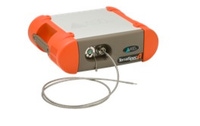Near-infrared spectroscopy is a highly flexible form of analysis, which can be applied to a broad range of research and industrial process applications
Near-infrared (NIR) spectroscopy is a highly flexible form of analysis, which can be applied to a broad range of research and industrial process applications. Long a staple technology in remote sensing, NIR spectroscopy has become popular within industrial markets as a cost-effective tool for measuring materials to optimize processes and manage costs.
NIR spectroscopy is a method that makes use of the near-infrared region of the electromagnetic spectrum (from about 700 to 2500 nanometers). By measuring light scattered off of and through a sample, NIR reflectance spectra can be used to quickly determine a material’s properties without altering the sample.
NIR converts measured data into actionable information to help optimize processes or improve research. Capable of examining irregular surfaces with the same ease as a carefully prepared sample, NIR is non-destructive, and requires little or no sample preparation. It can also be used to analyze multiple constituents in a single scan.

ASD FieldSpec rangeThe Gold Standard in Field Spectroradiometers |

ASD LabSpec rangeLaboratory Instrumentation for Qualitative and Quantitative Materials Analysis |

ASD TerraSpec rangePortable & handheld VNIR analyzers for mineral exploration and ore analysis |
|
|---|---|---|---|
| Measurement type | |||
| Remote sensing | |||
| Molecular structure | |||
| Accuracy | Spectral performance | Spectral performance | Spectral performance |
| Technology | |||
| Near-infrared Spectroscopy (NIR) | |||